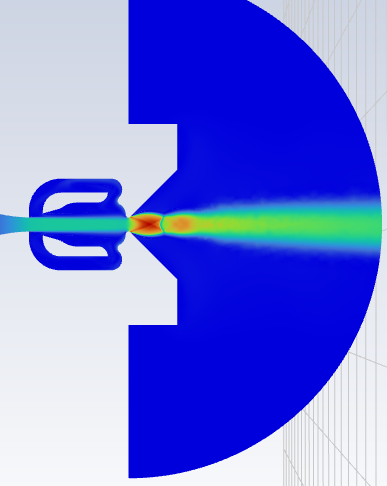-
-
November 15, 2023 at 1:43 am
ebochi
SubscriberHi. I'm trying to study the oscillation angle of a fluid vibrator.
And, I have actual research data through wind tunnel experiments.
Based on the data, the time step and inlet pressure are set to proceed, but the oscillation dosen't continue.
The settings are, (Pressure inlet - 340 kPa(gauge)) / (time step - 1/8 cycle for real freqyency) / (k-epsilon 2eqn & Coupled methods & Air for ideal gas, sutherland's law) / (Hybrid initialize)
total 1 milion fluent mesh, Most mesh inside the fluid vibrator, Others, it was distributed appropriately.

Sometimes, I have to make the time step very large so it oscillate, I don't know what's wrong.
Please advise. Thx.
-
November 15, 2023 at 2:45 pm
Federico
Ansys EmployeeCan you try initializing from the inlet?
-
November 15, 2023 at 6:06 pm
ebochi
Subscriberyes, I tried to initialize from the inlet, with both two options.
and the worst result was obtained.
-
November 17, 2023 at 2:18 pm
Federico
Ansys EmployeeHard to tell from this information alone.
You might need to reduce the time step further (we typically recommend 20 time steps to capture oscillations) to temporally resolve the perturbations that initiate the feedback loop.
-
-
-
- The topic ‘Why do unexpected shock waves occur at Fluidic OScillator?’ is closed to new replies.



-
4597
-
1495
-
1386
-
1209
-
1021

© 2025 Copyright ANSYS, Inc. All rights reserved.







